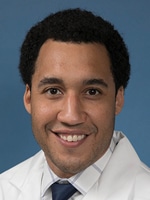March 2019—The standard riff for talking about a promising new cancer test should be familiar to anyone within sneezing distance of a laboratory: There’s no one-size-fits-all assay. But if any test were to come close, it would be liquid biopsy. Are clinicians eager to use it? Check. Is it relatively simple to do (check) with fairly quick turnaround times (check)? Does it work for solid and hematological tumors? Check and check. Across multiple specimen types—serum, urine, vitreous fluid, cerebrospinal fluid, stool? Quite likely. Can it be used to characterize patients’ molecular profiles, monitor therapy, assess tumor evolution, identify resistance mechanisms, and detect early disease and minimal/measurable residual disease? Half a dozen checks. Even if liquid biopsy does fall short of a one-size-fits-all assay, it’s doing a reasonable impression of a Swiss Army knife (if not Sergeant Troy’s sword fantastic, for those of you who are Thomas Hardy fans).
Read More »March 2019
FDA nudges standards adoption in electronic reporting
March 2019—An interesting medical informatics moment occurred post-9/11 with the delivery of anthrax-poisoned letters to several congressional and news media offices. “There was not a single anthrax test order communicated to the CDC electronically,” says Steven H. Hinrichs, MD.
Read More »Practical challenges in peripheral blood smear evaluation
March 2019—Unlike high-count monoclonal B-cell lymphocytosis, low-count MBL has a limited chance of progression to CLL and thus there is no need for follow-up. And a definitive diagnosis of T-cell large granulocytic leukemia requires demonstration of clonality.
Read More »Labs add safety net to critical values procedure
March 2019—A hypercritical value notification policy at Northwell Health in New York State authorizes the laboratory alone to activate a hospital’s rapid response team when necessary. This is the newest step in a critical value notification process that had been working well—but not quite well enough.
Read More »Exploring MALDI-TOF mass spec for mycobacteria
March 2019—The family of Mycobacteriaceae includes the genus Mycobacterium, which includes more than 190 species. These organisms have an unusual cell wall. Those of us who work in mycobacteria laboratories know that the cell wall has a high lipid content that makes these organisms acid fast. Thus they’re acid-fast bacteria.
Read More »Can NGS replace routine respiratory testing? Study says not yet
March 2019—A small study performed at the University of Utah found that a next-generation sequencing assay cannot replace routine standard-of-care testing to detect pneumonia in immunocompromised patients and determine their treatment. But it could be ordered when an infection is suspected and all other testing has failed to find the etiology.
Read More »AMP case report: FDA-approved DNA blood test for colorectal cancer prompts patient to undergo colonoscopy
March 2019—Colorectal cancer is the third most diagnosed cancer and the second highest cause of cancer mortality in men and women, and in 2016 it accounted for about nine percent of all diagnosed cancers in the United States. When CRC is detected at an early localized stage, the five-year survival rate is 90 percent. With progression to regional disease, five-year survival remains high, at 71 percent.
Read More »POC testing roundtable: risks, resources, relationships
March 2019—Infection control and the heavy demands on point-of-care coordinators were among the top concerns that came up in a recent CAP TODAY roundtable on point-of-care glucose testing. Publisher Bob McGonnagle spoke with four POC testing experts: Sharon Geaghan, MD, Cynthia Bowman, MD, Steven Cotten, PhD, and Corinne Fantz, PhD. Here is what they told us.
Read More »Semen analysis guide: a benchtop sperm morphology aid
March 2019—CAP Press released late last year its Semen Analysis Benchtop Reference Guide, an illustrated guide with emphasis on sperm morphology. Its 68 laminated pages are divided into sections: specimen collection and macroscopic assessment, sperm count, sperm morphology, and nonsperm cells. Behind the book is the CAP Reproductive Medicine Committee, in particular Erica J. Behnke, PhD, HCLD, of Ohio Fertility Providers, Jacob F. Meyer Jr., PhD, HCLD, of Eastern Virginia Medical School, and Laura L. Nelsen, MD, pathologist and director of cytology at MaineGeneral Medical Center and past chair of and now advisor to the committee.CAP TODAY asked Dr. Nelsen about the benchtop reference guide, sample pages of which appear below. Here is what she told us.
Read More »Put It on the Board
Lumipulse G β-Amyloid Ratio test has breakthrough device designation
March 2019—Fujirebio Diagnostics received on Feb. 1 breakthrough device designation from the FDA Center for Devices and Radiological Health for its Lumipulse G β-Amyloid Ratio (1-42/1-40) quantitative in vitro diagnostic test. The test uses measurable β-amyloid 1-42 and β-amyloid 1-40 concentrations found in human cerebral spinal fluid and combines those concentrations into a numerical ratio of β-amyloid 1-42/β-amyloid 1-40 to estimate the presence of β-amyloid neuritic plaque pathology in the brain. The Lumipulse G β-Amyloid Ratio (1-42/1-40) combines the results of Lumipulse G β-amyloid 1-42 and β-amyloid 1-40 using the Lumipulse G System. The ratio results are intended to aid in assessing adult patients, ages 50 and over, who present with cognitive impairment and are being evaluated for Alzheimer’s disease and other causes of cognitive decline. The results must be interpreted in conjunction with other diagnostic tools such as neurological examination.
Q&A column
Q. I just read the 2018 HER2 guideline update. Can you provide an example of how a previously equivocal case is resolved under the new guideline? Read answer.
Read More »Newsbytes
Building a lab or modernizing? Don’t forget the following March 2019—Building a new pathology lab or revamping an existing one gives laboratory decision-makers an opportunity to rethink information technology infrastructure and address persistent problems, plan for new technology, and improve processes.
Read More »From the President’s Desk: Our study of member services and support
March 2019—We launched the CAP member services and support strategy two years ago, setting out to figure out which benefits were most valued by the greatest number of members, identify places where we could find better ways to direct or maintain them, and see where we could be falling short. To keep everyone connected and everything on track, we created a coordinating group whose members had access to a fine staff and thoughtfully curated findings from years of member surveys and market research. Our own surveys showed how the interests and needs of our members overlapped. The market provided context.
Read More »Clinical pathology selected abstracts
March 2019—Evaluation of ethanol interference on routine biochemical tests: Ethanol, a central nervous system depressant widely consumed in many societies, is metabolized in the liver through multiple enzymatic pathways. If the liver’s capacity is exceeded, the excess alcohol will flood into the systemic circulation.
Read More »Anatomic pathology selected abstracts
March 2019—ALK expression in angiomatoid fibrous histiocytoma: a potential diagnostic pitfall: The authors recently encountered a case of primary pulmonary angiomatoid fibrous histiocytoma (AFH), which was initially misdiagnosed as inflammatory myofibroblastic tumor based in part on anaplastic lymphoma kinase expression by IHC. Prompted by this experience, they evaluated anaplastic lymphoma kinase (ALK) expression in 11 AFH, 15 inflammatory myofibroblastic tumors (IMT), and 11 follicular dendritic cell sarcomas using three antibody clones: D5F3, 5A4, and ALK1.
Read More »Molecular pathology selected abstracts
March 2019—Using circulating cell-free fetal DNA to test for monogenic disorders: Screening for fetal chromosomal abnormalities can be performed by noninvasive methods in which fetal cell-free DNA (cfDNA) circulating in the maternal blood is isolated and analyzed. However, the standard of care for screening for monogenic diseases remains population-based carrier screening—testing the parents for their carrier status of deleterious genes.
Read More » CAP TODAY Pathology/Laboratory Medicine/Laboratory Management
CAP TODAY Pathology/Laboratory Medicine/Laboratory Management









